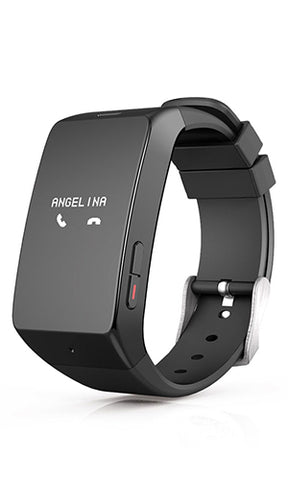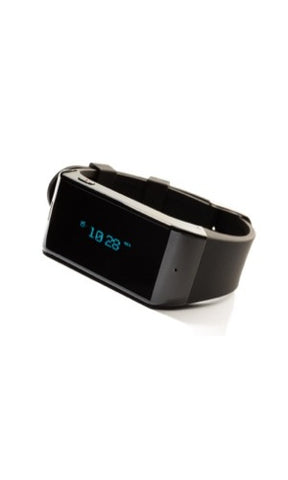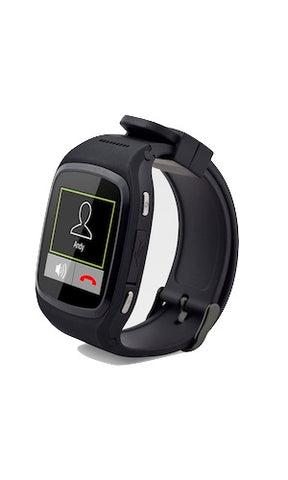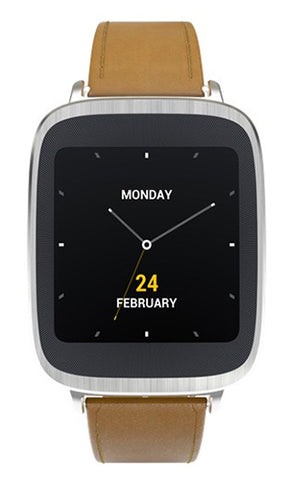The Future of Wearable Tech
Written By
Wearables.com
The Future of Wearable Tech
By: Jen Quinlan, VP of Marketing, Rithmio
I have a confession to make. Despite my specialization in wearable technology, I haven’t worn my FitBit in months. I’m not the only one.
Many people found the first wave of wearables came up short. Entry-level price points were high, form factors were clodgy and accuracy left a lot to be desired. It’s no wonder there was a 30% return rate? and high product abandonment after six months.
Companies found getting wearables ‘right’ is a tall order. To be truly useful, usable and desirable for people, we’ll see the following future improvements in wearable tech products to come in 2015 and beyond.
Invisible
Moore’s Law contends that as components get smaller, products gain efficiency and become more powerful. In other words, you can think of current wearables as a boombox on your wrist. Between conductive fabrics or sensor-clad smart garments, wearables will intertwine so closely with fashion we won’t be able to distinguish them apart.
Companies like AiQ Clothing, Hexoskin and OMsignal are already paving the way with biometric garments that measure body vitals. Future wearables could be more hidden by adding a thin film inside your favorite jewelry to measure biometric data, activity levels and even let you know when you’ve been typing at a keyboard too long.
Personalized
From wedding rings to Invisalign, objects worn on the body 24-7 are a personal thing. Unless the product addresses a critical medical need like a hearing aid, it is unlikely for a single wearable to be desirable enough to be worn all of the time.
Take a note from companies like Cuff or Misfit that employ a personalized approach to wearable tech. Their technology nests inside a system of jewelry that a person can select from and wear that day. Wearables are a part of the jewelry legacy, and they should be thought of as both parts tech gadget and a fashion statement.
Efficient
Alternative forms of energy to power wearables are on the rise. In December 2014 Tommy Hilfiger launched clothing with solar cells to charge devices. We’ve seen kinetic energy-powered gadgets from Chicago-based AMPY to Austin’s own Darla Hollander of Everywhere Energy. A personal favorite is the Peltier Ring by Sean Hodgins that leverages body heat to power small LED lights on a ring. While energy advancements require more polish to achieve commercial viability, they’ll be on your wrist sooner than you think.
Accurate
From your kids’ GPA to your own body’s BMI, our culture is getting more numbers oriented across many aspects of life. Approximations of how many steps you walked will no longer suffice as people demand accurate data from their devices – including wearables.
We have yet to see industry standards emerge to set manufacturer guidelines and advocate on consumers’ behalf. I anticipate advocacy boards to be formed to evaluate devices and require brands to deliver accuracy percentage guarantees. Can you picture a label on Jawbone packaging with a ‘99.5% accurate gesture tracking’ guarantee?
Permissions-Based
Marketers are salivating at the prospect of pushing wearables advertising to you around the clock. As ad revenues dwindle on TV and newspaper formats, next generation devices offer a new opportunity for brands to target people like we’ve never seen before.
Savvy consumers will demand the ability to set specific permission settings on their device to structure who, what, where and when they can be disturbed. Picture smartwatch settings to configure that your partner, child’s school and mother have access to send a push notification to your smartwatch’s screen during work hours on Monday through Friday. Conversely, people will also need to play an active role to own their body’s data generated. Optimal experiences for wearables will be contingent consumers being well-informed and demanding certain privacy settings.
Sentient
In Spike Jonze’s ‘Her’, Samantha explains how she works as, “Intuition… what makes me me is my ability to grow through my experiences. Basically, in every moment I’m evolving, just like you.”
Even Furbies in 1998 could learn new things, so why is it that $150 activity trackers can’t learn additional activities like jumping rope, swinging a kettlebell or salsa dancing? Peoples’ interests evolve. Their wearables need to be able to evolve too and learn new things. The single feature, fancy pedometers of today’s activity tracking market won’t sustain for much longer.
Multi Point
The wearable tech conversation will quickly shift from discussion of your wearable (singular) to the system of sensors on your body at any point in time. Already people are wearing an activity tracker and have a smartphone in their purse; both of which are gathering motion-sensing data through the accelerometer and gyroscope inside. Technologists are working on ways to derive meaning from multiple sensors on the body at one time, to give a person a holistic view of how her body is moving or performing across multiple devices and sensors.
Seamless
I’m excited to see what happens when wearables converge with connected homes to drive efficiencies without having to tap a button on a screen. Imagine approaching your home’s door with groceries in hand, and the heartbeat signature via your wearable signals the door’s smartlock to unlock. While crossing your living room, a sensor on your wrist wearable notices your core body temperature is above average and automatically interacts with Nest thermostat to trigger the air conditioning. Your wearable also includes a sensor to detect hydration levels, and it triggers your smart refrigerator to automatically pour a glass of water for you as you enter the kitchen to unload your groceries.
While it is premature to predict specific features or form factors that will prevail in the future, wearable tech presents a fascinating field to study. Never before has computing been small enough to be worn relatively comfortably around the clock on the body, presenting opportunities for breakthrough medical advancements and unfortunately unsurmounted marketing nuisances. With innovations on the horizon cited in this article, we’re moving closer to making possible products that are useful, usable and desirable for people.
This article originally appeared in Velma Magazine in January 2015 for their Futurist Issue. Photography by Danielle Selby, @danieselby.
The post The Future of Wearable Tech appeared first on Wearables.com.
Tags: Apps





